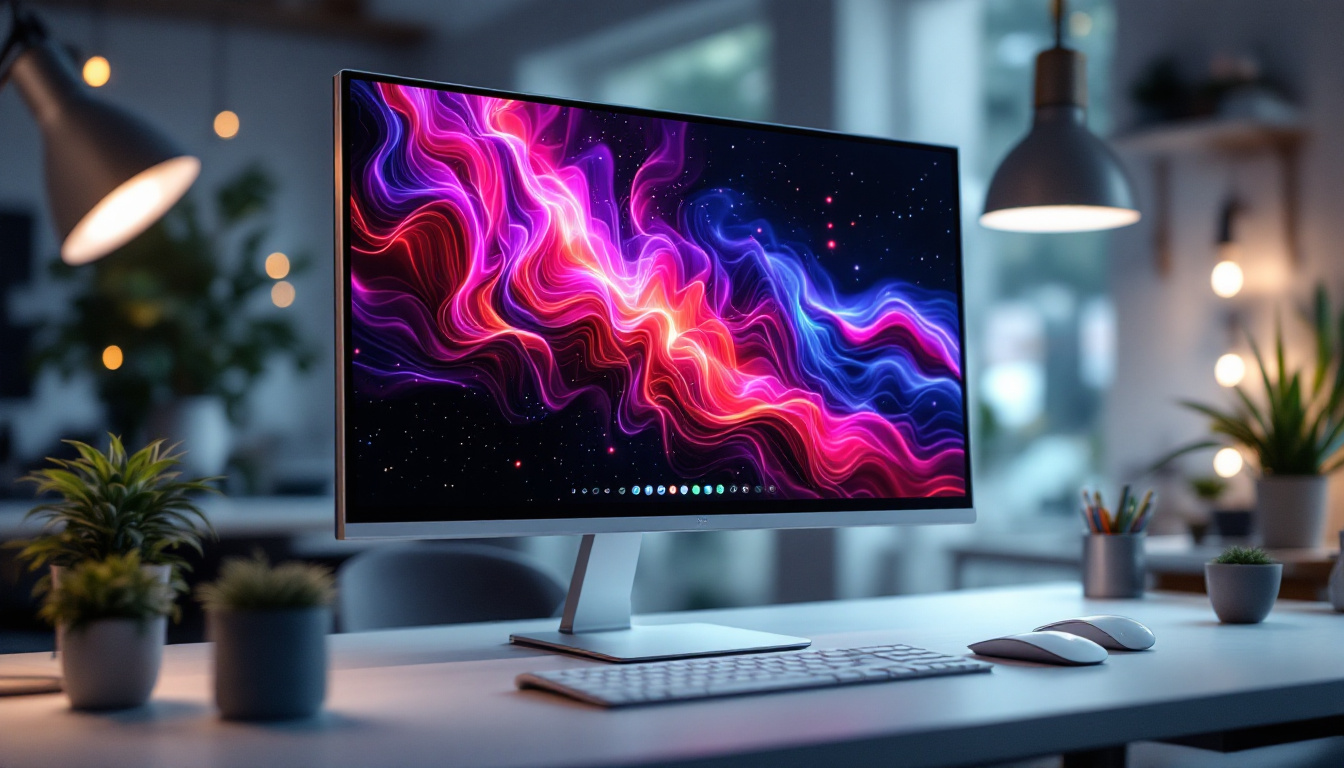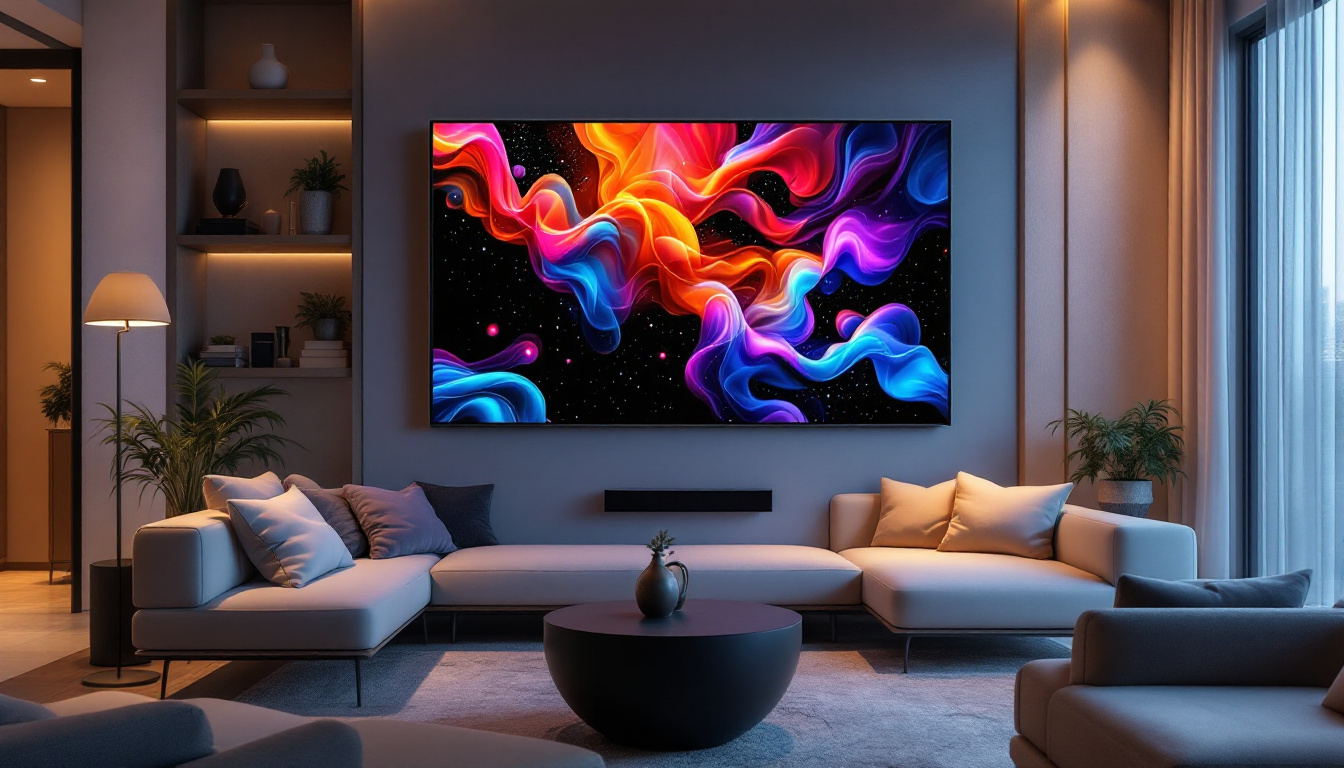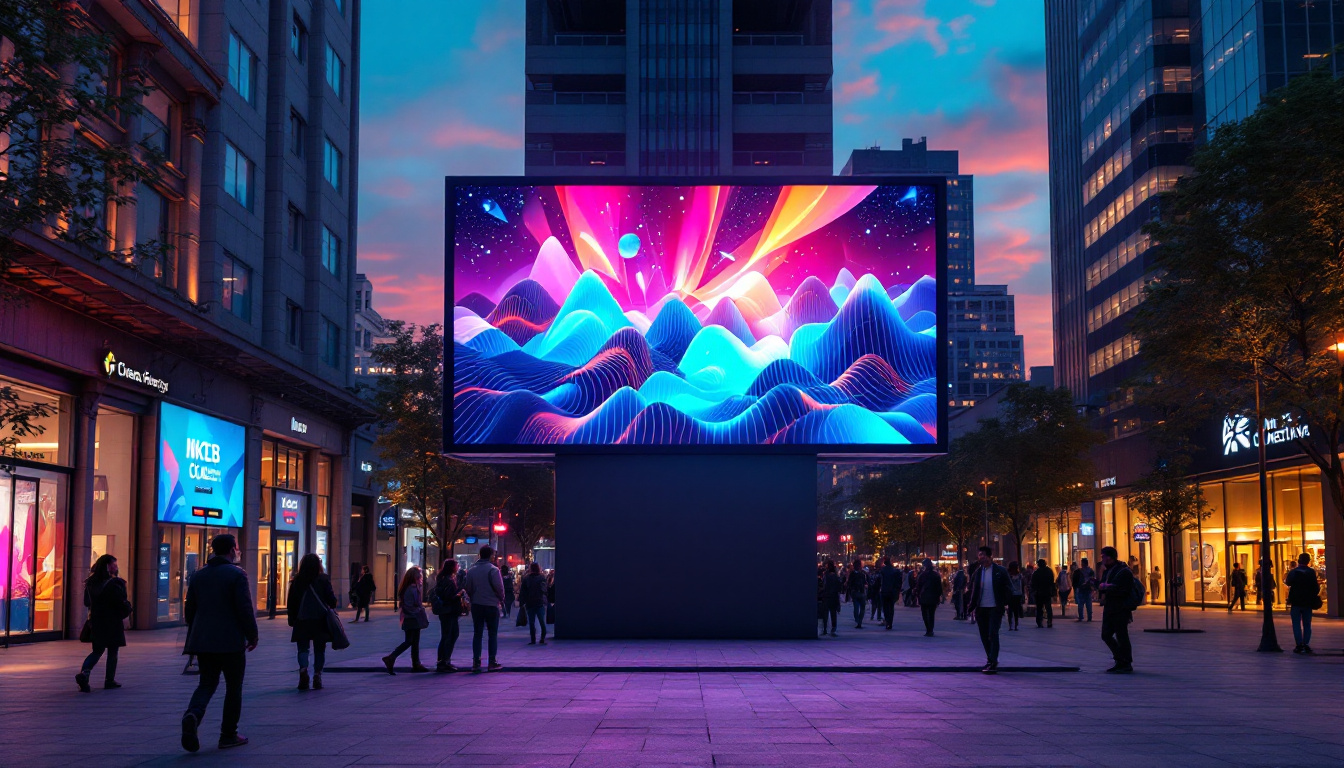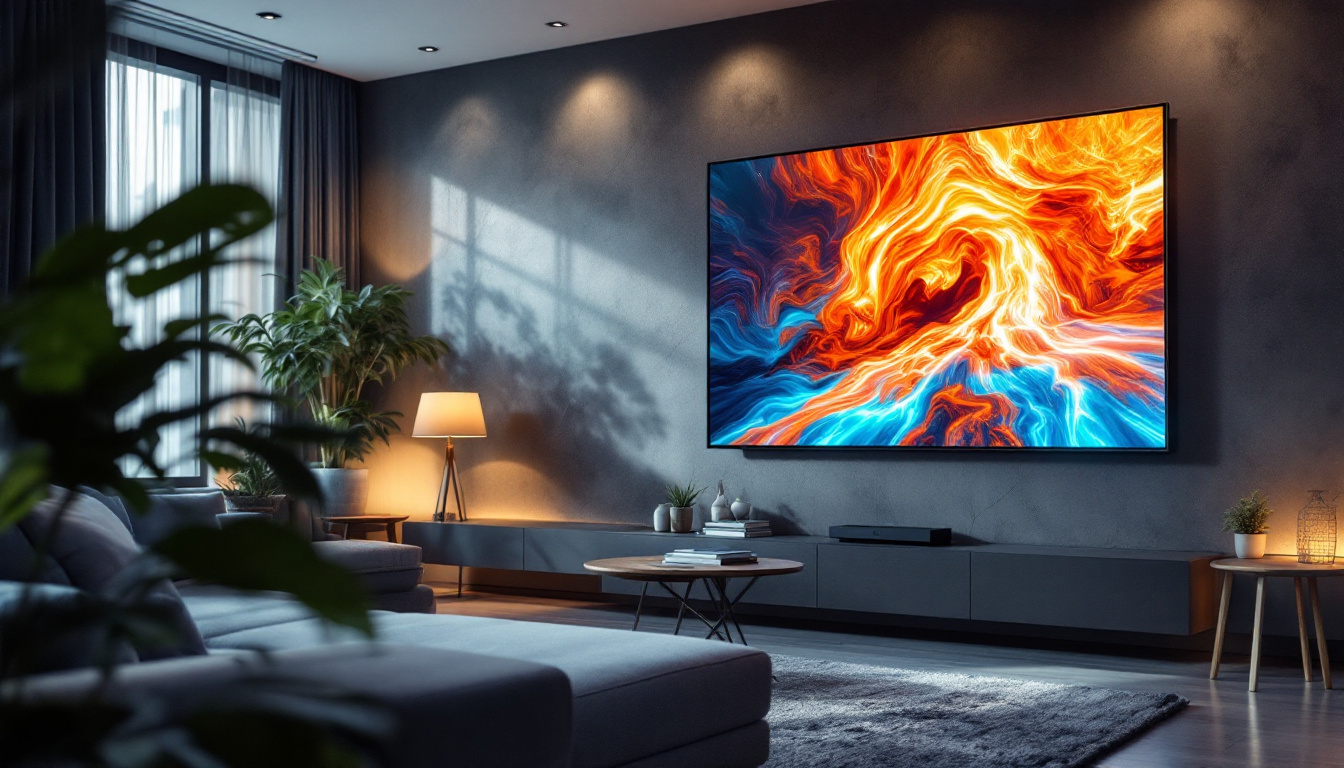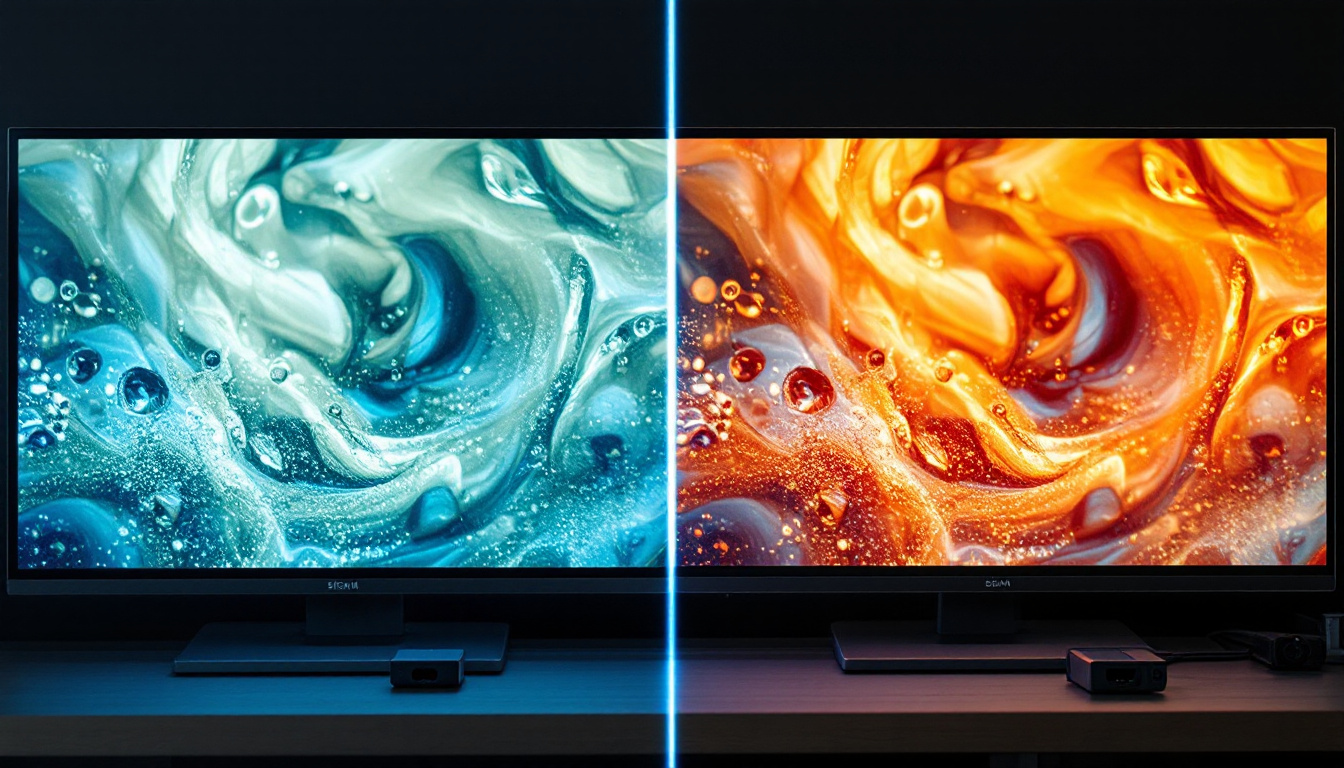Panel LCD Monitor: LED Display Explained
The world of display technology has evolved significantly over the years, with various types of monitors available to suit different needs. Among these, the LCD (Liquid Crystal Display) monitor has become a staple for both personal and professional use. With the introduction of LED (Light Emitting Diode) backlighting, LCD monitors have seen substantial improvements in performance and efficiency. This article delves into the intricacies of panel LCD monitors and the role of LED displays, shedding light on their features, benefits, and applications.
Understanding LCD Technology
Liquid Crystal Display technology utilizes liquid crystals sandwiched between two layers of glass or plastic. These crystals manipulate light to produce images on the screen. The fundamental operation of LCD monitors is based on the alignment of these liquid crystals, which can change in response to electrical signals. This alignment determines how much light passes through, creating the colors and images that users see.
The Components of LCD Monitors
At the core of an LCD monitor are several key components that work together to create the final image. These include:
- Liquid Crystals: The heart of the display, these substances react to electric currents, altering their orientation to control light passage.
- Backlight: Traditional LCDs use fluorescent tubes, but modern designs often employ LED backlighting, which enhances brightness and energy efficiency.
- Polarizers: These layers filter light to ensure that only the desired wavelengths pass through, contributing to color accuracy and contrast.
Each of these components plays a crucial role in determining the overall quality of the image displayed. The combination of liquid crystals and backlighting technology is what sets LCD monitors apart from older technologies like CRT (Cathode Ray Tube) displays.
How LCD Monitors Work
The operation of an LCD monitor can be broken down into several steps. Initially, the backlight illuminates the liquid crystals. When an electrical signal is applied, the liquid crystals change their orientation, allowing varying amounts of light to pass through the polarizers. This process creates the colors and images that users see on the screen.
The resolution of the monitor, which refers to the number of pixels displayed, is another critical factor influencing image quality. Higher resolutions provide more detail and clarity, making them ideal for tasks such as graphic design, gaming, and video editing.
The Role of LED Backlighting
LED backlighting has revolutionized the way LCD monitors function. By replacing traditional fluorescent tubes with LED lights, manufacturers have been able to enhance the overall performance of LCD displays significantly.
Advantages of LED Backlighting
LED backlighting offers several advantages over traditional methods:
- Improved Energy Efficiency: LED lights consume less power than fluorescent tubes, resulting in lower energy costs and a reduced carbon footprint.
- Better Brightness and Contrast: LEDs provide superior brightness levels and contrast ratios, allowing for more vibrant colors and deeper blacks.
- Thinner Designs: LED backlighting enables manufacturers to create slimmer monitors, making them more aesthetically pleasing and easier to fit into various spaces.
These benefits have made LED-backlit LCD monitors increasingly popular among consumers and professionals alike. As technology continues to advance, the gap between display quality and energy efficiency is closing, making LED displays a compelling choice.
Types of LED Backlighting
There are primarily two types of LED backlighting used in LCD monitors: edge-lit and full-array. Each type has its own set of characteristics and applications.
- Edge-Lit LED: In this configuration, LEDs are placed along the edges of the screen. This design allows for thinner monitors but may result in uneven lighting and reduced contrast in some cases.
- Full-Array LED: Here, LEDs are distributed across the entire back of the screen. This setup provides more uniform lighting and better control over local dimming, enhancing contrast and color accuracy.
Choosing between edge-lit and full-array LED monitors often depends on the user’s specific needs, such as space limitations or the requirement for superior image quality.
Benefits of Panel LCD Monitors
Panel LCD monitors come with a host of benefits that make them a preferred choice for various applications. Understanding these advantages can help consumers make informed decisions when selecting a monitor.
High Image Quality
One of the most significant advantages of LCD monitors is their ability to produce high-quality images. With advancements in technology, modern LCD panels offer excellent color reproduction and sharpness. This makes them suitable for tasks that require precise visuals, such as photo editing, graphic design, and gaming.
Moreover, the introduction of technologies like IPS (In-Plane Switching) has further enhanced color accuracy and viewing angles. IPS panels are known for their consistent color performance, making them ideal for collaborative work environments where multiple viewers may be present.
Reduced Eye Strain
Another essential benefit of LCD monitors is their ability to reduce eye strain. Many modern LCD screens come equipped with features such as flicker-free technology and blue light filters. These features help minimize the discomfort associated with prolonged screen time, making them a healthier option for users who spend long hours in front of a monitor.
By reducing flicker and harmful blue light exposure, these monitors can contribute to a more comfortable viewing experience, allowing users to focus on their tasks without unnecessary distractions.
Applications of Panel LCD Monitors
Panel LCD monitors find applications across a wide range of fields, from professional settings to personal use. Their versatility makes them suitable for various tasks, including:
Professional Use
In corporate environments, LCD monitors are commonly used for presentations, data analysis, and design work. Their high resolution and color accuracy make them ideal for tasks that require detailed visuals. Additionally, the ability to connect multiple monitors enhances productivity, allowing users to multitask effectively.
In creative industries, such as graphic design and video editing, the need for accurate color representation is paramount. LCD monitors with IPS technology are often favored in these fields due to their superior color consistency and wide viewing angles.
Gaming and Entertainment
Gaming enthusiasts also benefit from the advancements in LCD monitor technology. High refresh rates and fast response times are critical for an optimal gaming experience. Many modern LCD monitors cater to gamers with features like adaptive sync technologies, which eliminate screen tearing and stuttering.
Moreover, the vibrant colors and deep blacks provided by LED backlighting enhance the visual experience in gaming and movie-watching, making these monitors a popular choice among entertainment enthusiasts.
Choosing the Right Panel LCD Monitor
When selecting a panel LCD monitor, several factors should be considered to ensure that it meets the user’s needs. Understanding these factors can help guide the purchasing decision.
Screen Size and Resolution
The first consideration is the screen size and resolution. Larger screens with higher resolutions provide more workspace and detail, making them ideal for tasks that require precision. However, the choice of size should also take into account the available space and viewing distance.
For general use, a resolution of 1920×1080 (Full HD) is often sufficient. However, for more demanding applications, such as video editing or gaming, higher resolutions like 2560×1440 (QHD) or 3840×2160 (4K) may be preferable.
Panel Type
The type of panel used in the monitor is another crucial factor. As mentioned earlier, IPS panels offer better color accuracy and viewing angles, while TN (Twisted Nematic) panels are known for their faster response times. VA (Vertical Alignment) panels provide a balance between the two, offering good contrast and color reproduction.
Choosing the right panel type depends on the primary use of the monitor. For professional work requiring color accuracy, IPS panels are recommended, while gamers may prefer TN panels for their speed.
Future Trends in LCD Monitor Technology
The landscape of LCD monitor technology is continuously evolving. As manufacturers strive to meet the demands of consumers, several trends are emerging that could shape the future of display technology.
Increased Adoption of OLED Technology
While LCD monitors have dominated the market, OLED (Organic Light Emitting Diode) technology is gaining traction. OLED displays offer superior contrast ratios and color reproduction, as each pixel emits its own light. This technology could potentially replace LCDs in certain applications, particularly in high-end displays.
However, the high cost of OLED technology may limit its widespread adoption in the short term. As production methods improve and costs decrease, OLED monitors may become more accessible to consumers.
Advancements in Resolution and Refresh Rates
As content continues to evolve, so too does the demand for higher resolutions and refresh rates. The trend towards 8K displays is already beginning to emerge, promising even more detail and clarity. Additionally, refresh rates are steadily increasing, with monitors boasting 240Hz and beyond becoming more common.
These advancements will cater to both gamers and professionals who require the best possible visual experiences. As technology progresses, consumers can expect to see even more impressive specifications in the coming years.
Conclusion
Panel LCD monitors with LED backlighting have transformed the way we interact with digital content. With their high image quality, energy efficiency, and versatility, they have become a staple in both professional and personal settings. Understanding the technology behind these displays, as well as their applications and benefits, can empower consumers to make informed decisions when selecting a monitor.
As technology continues to advance, the future of LCD monitors looks promising. Whether through the adoption of new technologies like OLED or the pursuit of higher resolutions and refresh rates, the evolution of display technology will undoubtedly enhance the user experience for years to come.
Discover Cutting-Edge LED Displays with LumenMatrix
Ready to experience the pinnacle of display technology? LumenMatrix is at the forefront of LED innovation, offering a wide array of LED display solutions that bring your content to life. From vibrant Indoor LED Walls to dynamic Outdoor LED Displays, and from mobile Vehicle LED Displays to interactive Floor LED Displays, our products are designed to captivate and engage. Embrace the future of visual communication with our Custom LED Displays and All-in-One LED solutions that ensure your message resonates with clarity and impact. Don’t just take our word for it; check out LumenMatrix LED Display Solutions today and transform your space into a mesmerizing visual experience.

